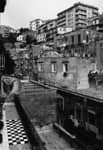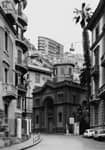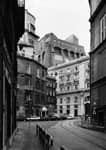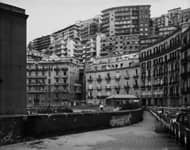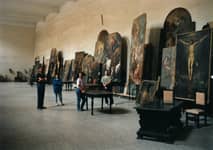Reflecting on the experience of photographing within the dense forest of structures and signs in Tokyo, he concentrated in Naples on the accumulation of living spaces in the city, as well as making a number of photographs that integrated religious and secular buildings. Whilst a few of the Naples photographs have affinities to Struth’s earlier street photographs, the organising device of the central perspective was generally left behind in favour of more complex pictures of the urban fabric.
In Naples, Struth shared an apartment with Janice Guy and Giulia Zorzetti, a restorer of old paintings. On occasions, Struth went with Zorzetti to look at the paintings being restored. He recalls that the visits “offered a very thought-provoking encounter with the medium I had given up a decade ago. Restorers get closer to a painting than anyone has ever been since the work was originally painted. They have an intimate proximity with the manufacture of the painting, with the way the material had been manoeuvred on the surface of the canvas or wall.” On the last day of his stay in Naples, Struth made the photograph of Zorzetti and three of her colleagues, The Restorers in San Lorenzo Maggiore.

